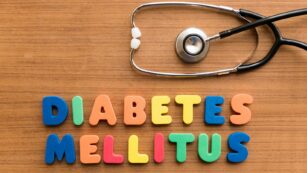
Navigating life with diabetes can be daunting, but embracing lifestyle changes can significantly ease this journey. Whether you’re newly diagnosed or seeking to refine your management strategies, understanding how daily habits influence blood sugar levels is crucial. This article explores practical adjustments that can make a big difference in managing diabetes effectively.
Lifestyle Changes for Diabetes
Making lifestyle changes can greatly enhance diabetes management. These adjustments vary somewhat between Type 1 and Type 2 diabetes but generally focus on diet and exercise.
Type 1 Diabetes
 In managing Type 1 diabetes, monitoring carbohydrate intake plays a crucial role. Individuals need to count the carbohydrates in each meal to match their insulin dosage accurately. For example, foods like bread, rice, and fruit contain higher carbs and require careful consideration. Regular physical activity is also essential, as it helps to increase insulin sensitivity. This means that the body needs less insulin to manage blood sugar levels effectively. Activities such as jogging, swimming, or cycling for 30 minutes a day can be particularly beneficial.
In managing Type 1 diabetes, monitoring carbohydrate intake plays a crucial role. Individuals need to count the carbohydrates in each meal to match their insulin dosage accurately. For example, foods like bread, rice, and fruit contain higher carbs and require careful consideration. Regular physical activity is also essential, as it helps to increase insulin sensitivity. This means that the body needs less insulin to manage blood sugar levels effectively. Activities such as jogging, swimming, or cycling for 30 minutes a day can be particularly beneficial.
Moreover, maintaining a consistent meal schedule aids in stabilizing blood glucose levels. Skipping meals can lead to unexpected fluctuations, which are dangerous for individuals managing Type 1 diabetes. It’s also important to stay hydrated and monitor blood sugar levels regularly to adjust food intake, exercise, and insulin accordingly.
Type 2 Diabetes
For individuals with Type 2 diabetes, weight management is a key aspect. Losing even a small percentage of body weight can significantly improve blood sugar control. A balanced diet rich in fibers, such as whole grains, vegetables, and fruits, and low in fats and calories, supports weight loss and helps manage glucose levels.
Regular exercise is equally crucial; it not only aids in weight loss but also improves the body’s use of insulin. Strength training and aerobic exercises are beneficial, promoting muscle build-up which burns more glucose. Most experts recommend at least 150 minutes of moderate activity per week.
Essential Lifestyle Changes for Managing Diabetes
Effective diabetes management requires strategic lifestyle adjustments tailored to type-specific needs. This section explores further into vital aspects like diet and physical activity for better disease management.
Diet Modifications for Better Blood Sugar Control
 Modifying diet is critical for maintaining stable blood sugar levels. Individuals with diabetes benefit from a balanced diet rich in fiber and low in unhealthy fats and sugars. Incorporating whole grains, fruits, vegetables, and lean proteins helps moderate blood sugar spikes and supports overall health. For instance, opting for brown rice over white rice or snacking on fruits instead of sweets can make substantial differences. Moreover, limiting processed foods and preparing meals at home contribute to better control over the nutritional content, facilitating a healthier eating schedule. Meal planning also proves imperative, helping avoid spontaneous food choices that might not align with blood sugar management goals.
Modifying diet is critical for maintaining stable blood sugar levels. Individuals with diabetes benefit from a balanced diet rich in fiber and low in unhealthy fats and sugars. Incorporating whole grains, fruits, vegetables, and lean proteins helps moderate blood sugar spikes and supports overall health. For instance, opting for brown rice over white rice or snacking on fruits instead of sweets can make substantial differences. Moreover, limiting processed foods and preparing meals at home contribute to better control over the nutritional content, facilitating a healthier eating schedule. Meal planning also proves imperative, helping avoid spontaneous food choices that might not align with blood sugar management goals.
Importance of Regular Physical Activity
Engaging in regular physical activity supports effective diabetes management. Exercise helps increase insulin sensitivity, which allows muscles to use sugar more effectively for energy. Ideally, adults should aim for at least 150 minutes of moderate-intensity activity per week, such as brisk walking, swimming, or cycling. Consistency in activity not only aids glucose management but also contributes to weight loss, which is crucial for managing Type 2 diabetes. Including a mix of aerobic exercises and resistance training can maximize health benefits.
Monitoring Tools and Techniques
Blood Glucose Meters
 A blood glucose meter provides instantaneous feedback on blood sugar levels. Many models store this data, which lets users track trends over time. For example, devices like the Accu-Chek, OneTouch, and FreeStyle Lite offer features such as memory storage for past readings and options for downloading data to a computer or smartphone. Regularly monitoring glucose levels can pinpoint the effects of dietary choices and physical activities, guiding better decision-making.
A blood glucose meter provides instantaneous feedback on blood sugar levels. Many models store this data, which lets users track trends over time. For example, devices like the Accu-Chek, OneTouch, and FreeStyle Lite offer features such as memory storage for past readings and options for downloading data to a computer or smartphone. Regularly monitoring glucose levels can pinpoint the effects of dietary choices and physical activities, guiding better decision-making.
Continuous Glucose Monitoring Systems (CGMS)
A Continuous Glucose Monitoring System (CGMS) utilizes a sensor placed under the skin to measure glucose levels in tissue fluid. Systems like the Dexcom G6 and the FreeStyle Libre provide real-time glucose readings every few minutes and display trends that alert users to spikes and drops in glucose levels. If blood sugar levels become too high or low, the system alerts can prompt immediate action.
